The Red-bearded Bee Eater (Nyctyornis amictus) is a spectacular bird species that captures the hearts of bird enthusiasts and nature lovers with its vibrant plumage and unique hunting techniques. This colorful avian gem is known for its distinctive red facial feathers and its remarkable ability to catch flying insects mid-air. In this article, we will explore the fascinating world of the Red-bearded Bee Eater, uncovering its appearance, behavior, habitat, and the conservation efforts needed to protect this captivating species.
Red-bearded Bee Eater images
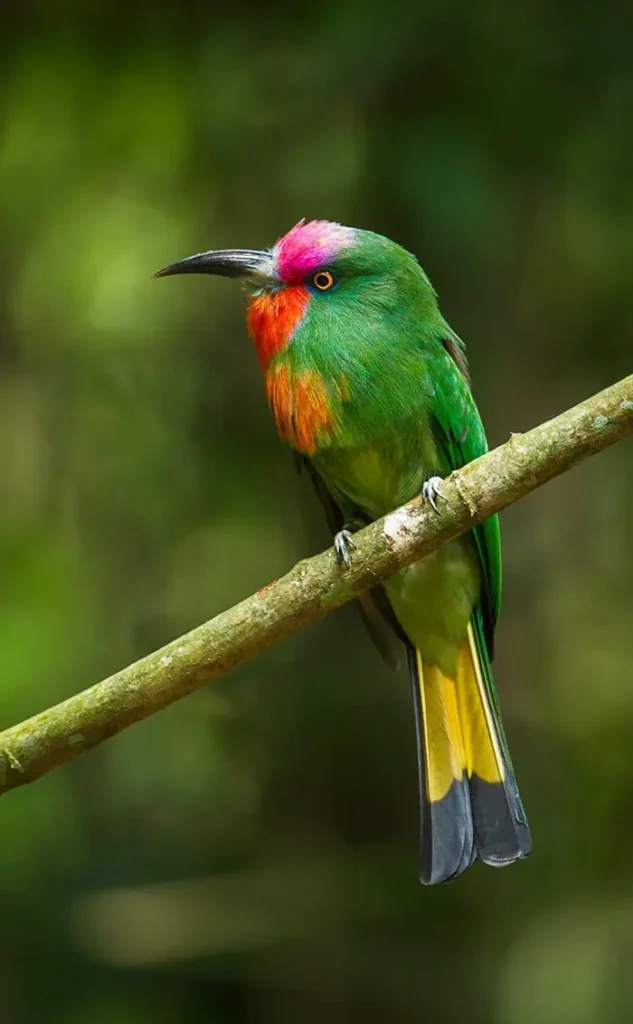


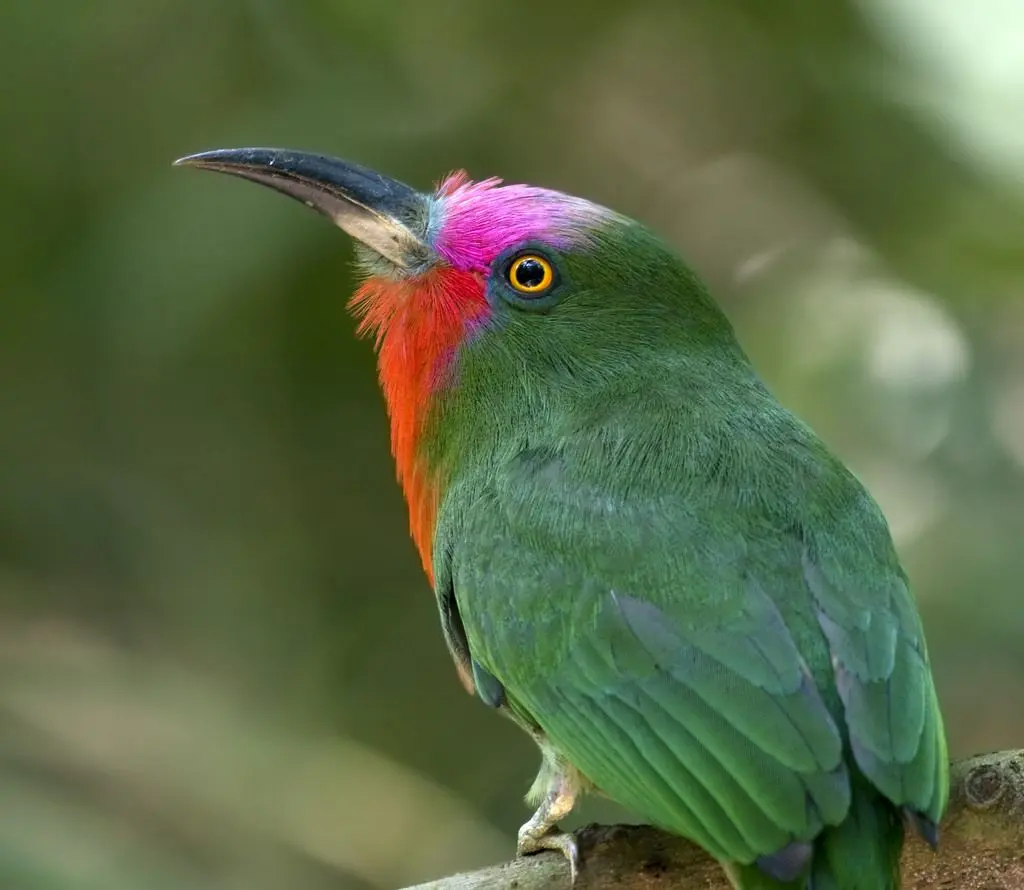
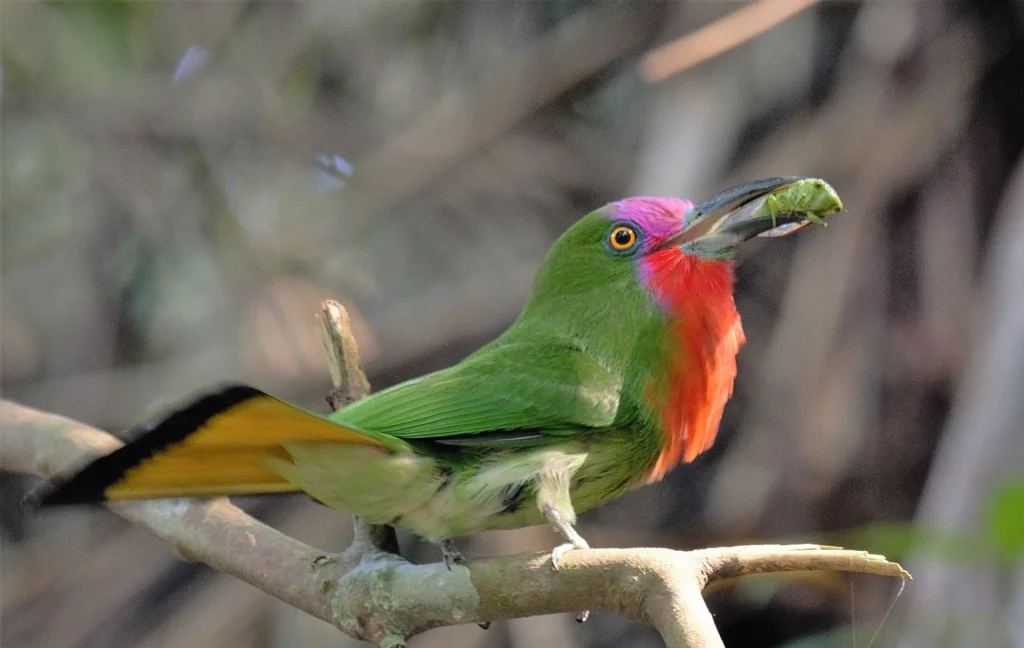


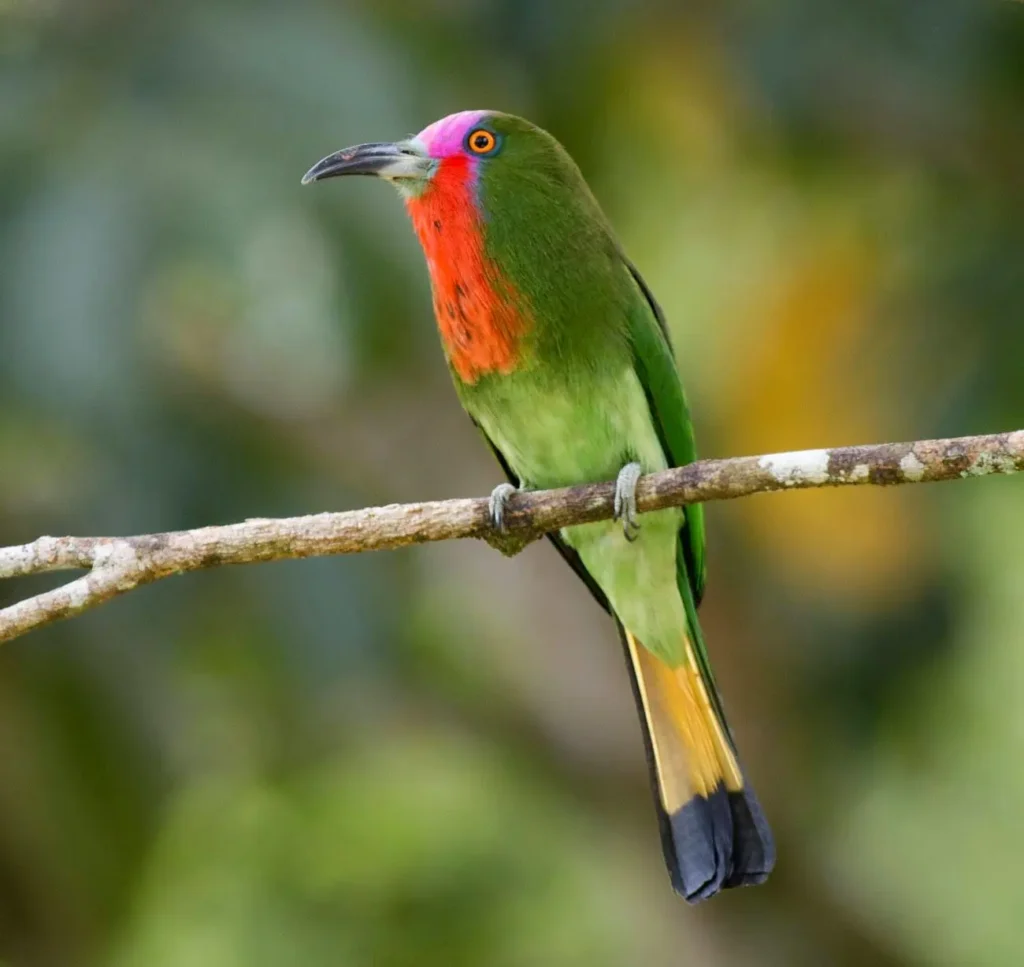

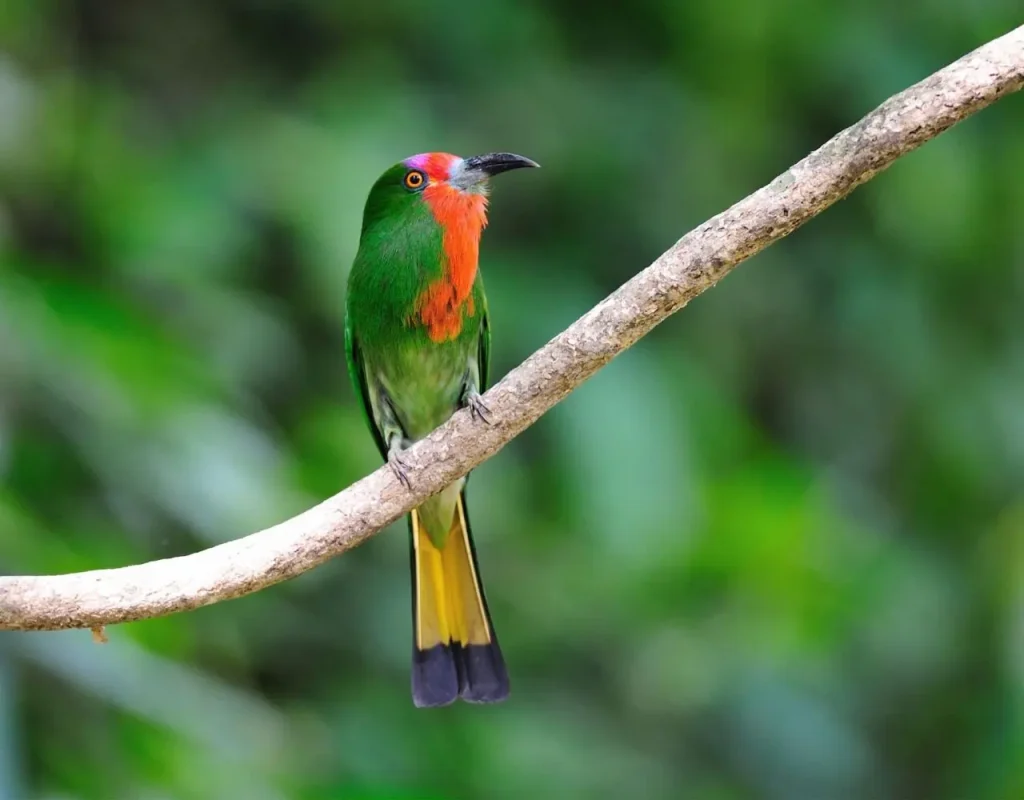

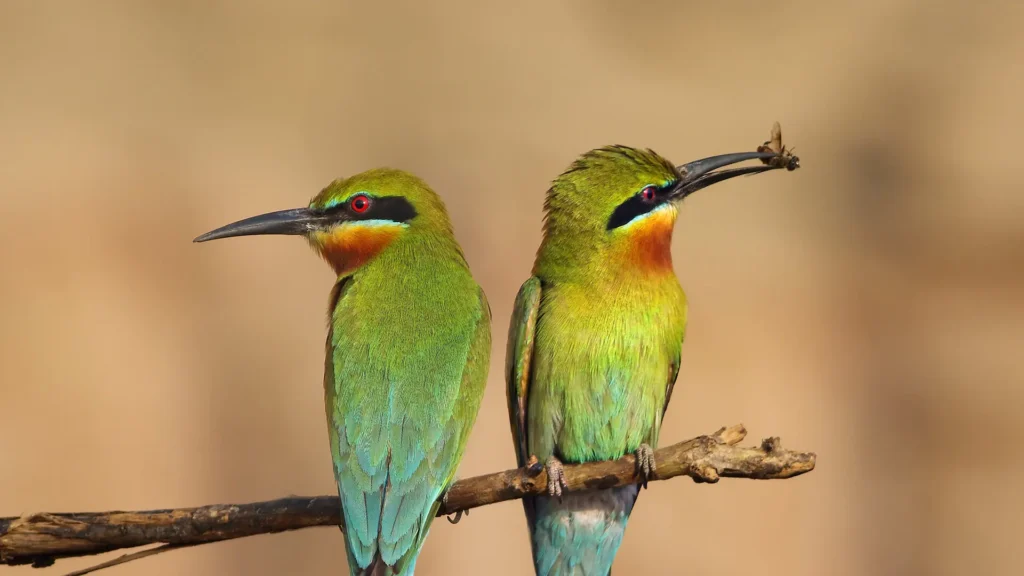


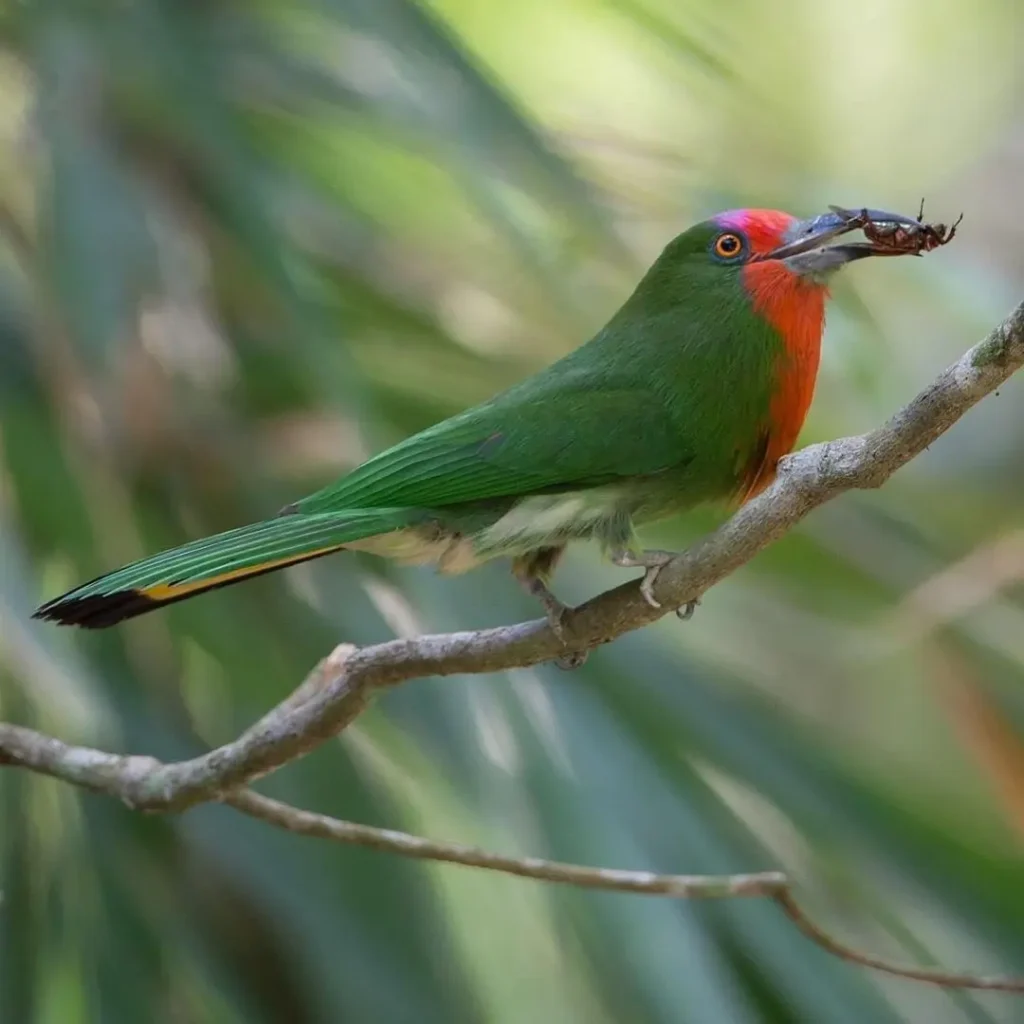
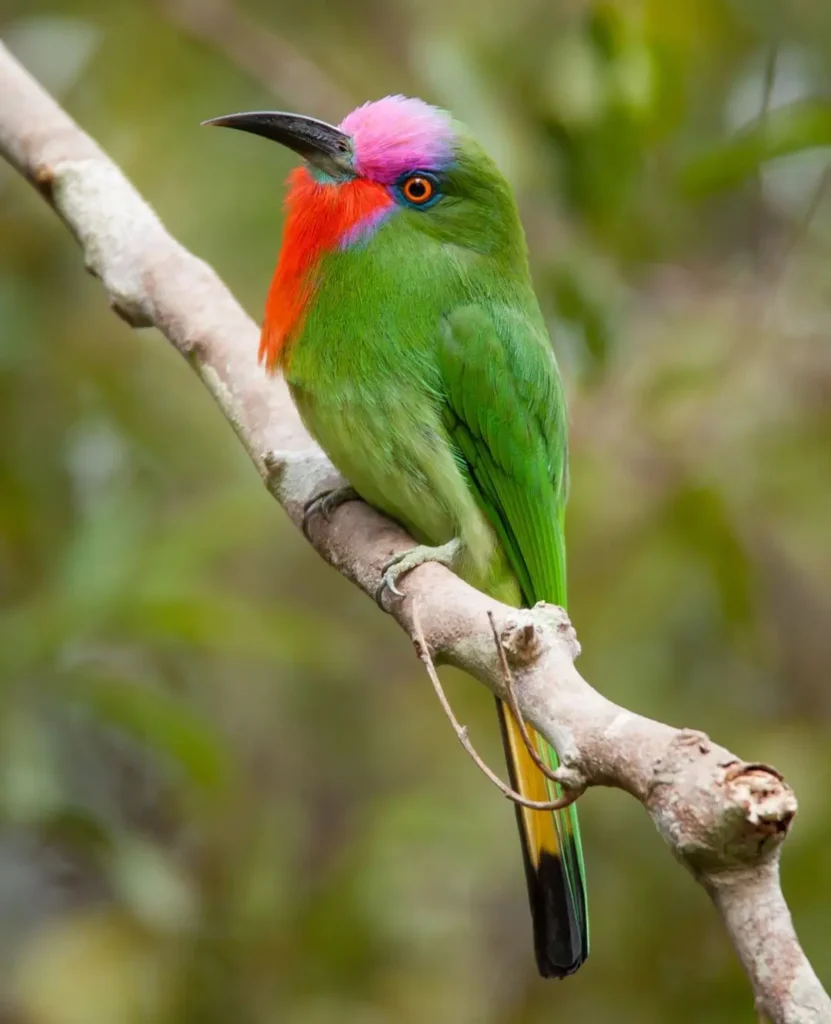


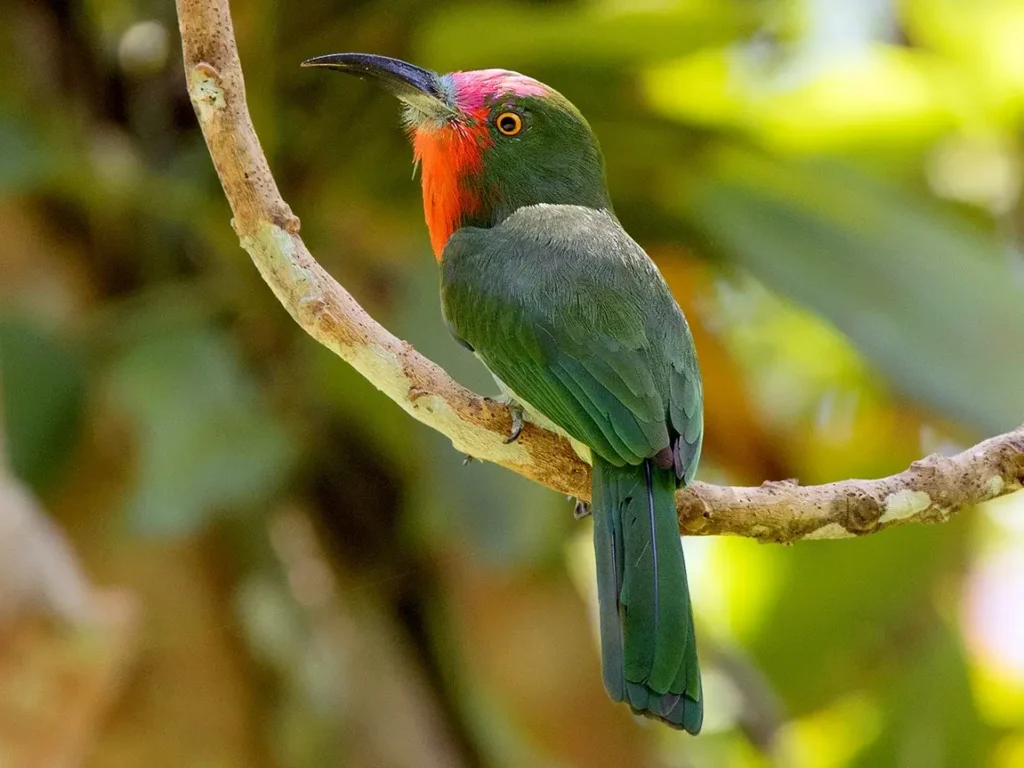
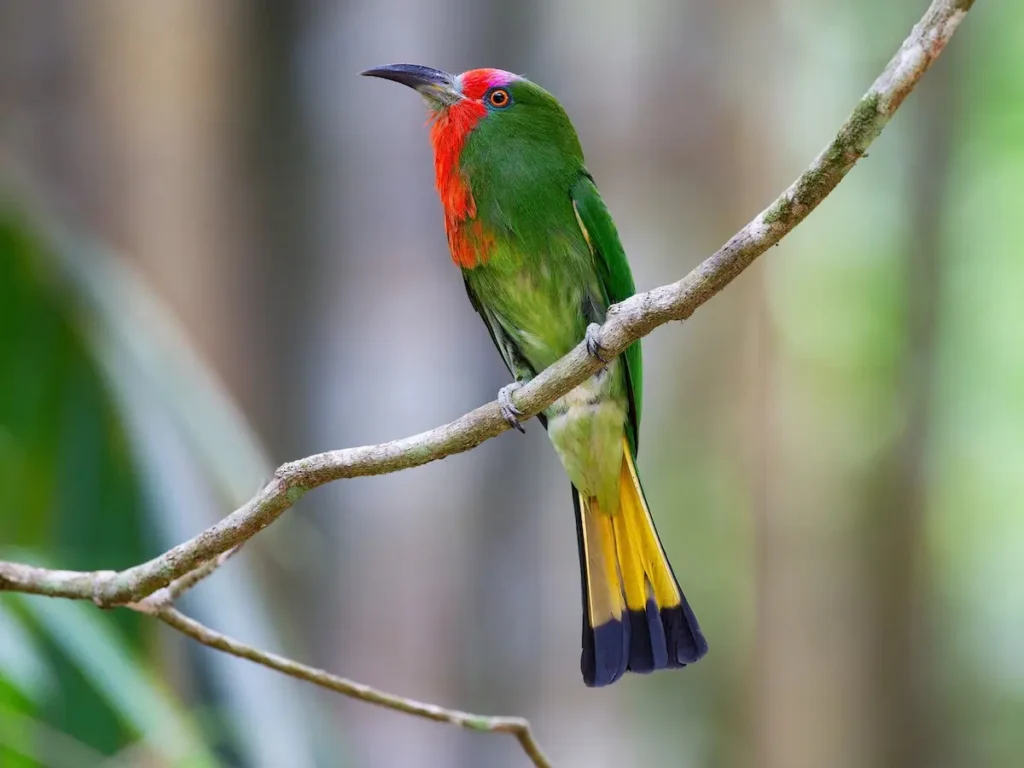


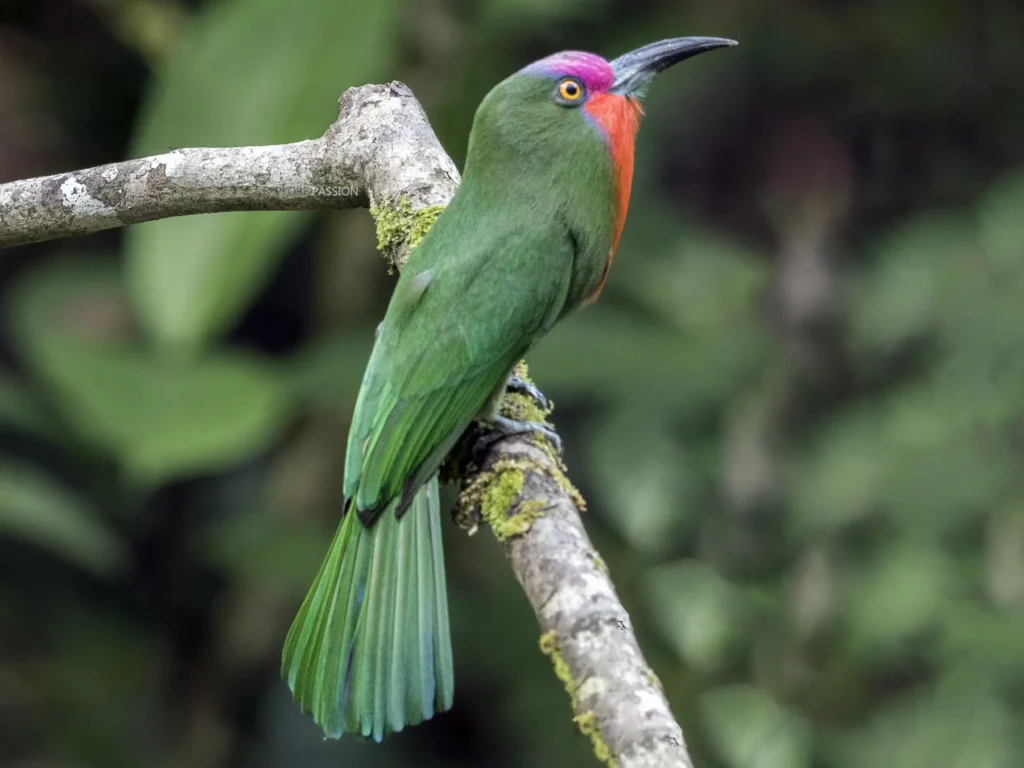

Appearance and Plumage
The Red-bearded Bee Eater is a medium-sized bird with a length of approximately 9 to 10 inches (23 to 25 centimeters). Its most striking feature is its vibrant plumage. The upperparts are primarily green, with a blue crown and a red patch on the throat and chin, which gives the bird its name. The wings are adorned with shades of green, blue, and black, and the tail feathers display elongated central streamers. The underparts are a pale greenish-yellow, providing a beautiful contrast to the vibrant colors of the upper body.
Behavior and Feeding Habits
The Red-bearded Bee Eater is an expert aerial hunter, specializing in catching flying insects on the wing. It perches on a high branch or an exposed spot, scanning the air for its prey. Once it spots an insect, it swiftly launches into flight, displaying impressive agility and maneuverability as it swoops, twists, and turns to intercept its target. With its sharp, curved beak, the Red-bearded Bee Eater snatches the insect in mid-air, often returning to its perch to swallow it whole. Besides insects, these birds also feed on bees, wasps, butterflies, and other small flying invertebrates.
Habitat and Distribution
The Red-bearded Bee Eater is native to the tropical regions of Southeast Asia, including countries such as Myanmar, Thailand, Malaysia, Indonesia, and the Philippines. It inhabits various forested habitats, including lowland rainforests, secondary forests, and mangroves. These birds are often found near bodies of water, such as rivers or ponds, where they can find an abundant supply of insects.
Breeding and Nesting
During the breeding season, male Red-bearded Bee Eaters engage in courtship displays to attract females. They perform aerial acrobatics, flying high into the sky and descending in a series of swoops and twists while calling out to potential mates. Once a pair is formed, they excavate a nesting burrow in a vertical earthen bank. The female lays a clutch of eggs, usually ranging from two to four, and both parents take turns incubating them. After hatching, the parents feed the chicks a diet of regurgitated insects until they are ready to fledge.
Conservation Status and Threats
The Red-bearded Bee Eater is currently classified as a species of least concern by the International Union for Conservation of Nature (IUCN). However, like many bird species, it faces threats such as habitat loss and degradation due to deforestation, agricultural expansion, and urbanization. Conservation efforts are crucial to protect the natural habitats of these birds, preserve nesting sites, and raise awareness about the importance of biodiversity and habitat conservation.
The Red-bearded Bee Eater is a true avian marvel, captivating observers with its vibrant plumage and extraordinary hunting skills. Its presence adds a splash of color and excitement to the tropical skies of Southeast Asia. By appreciating and protecting this stunning species, we can ensure that future generations can continue to marvel at the beauty and grace of the Red-bearded Bee Eater, a true testament to the wonders of nature.








